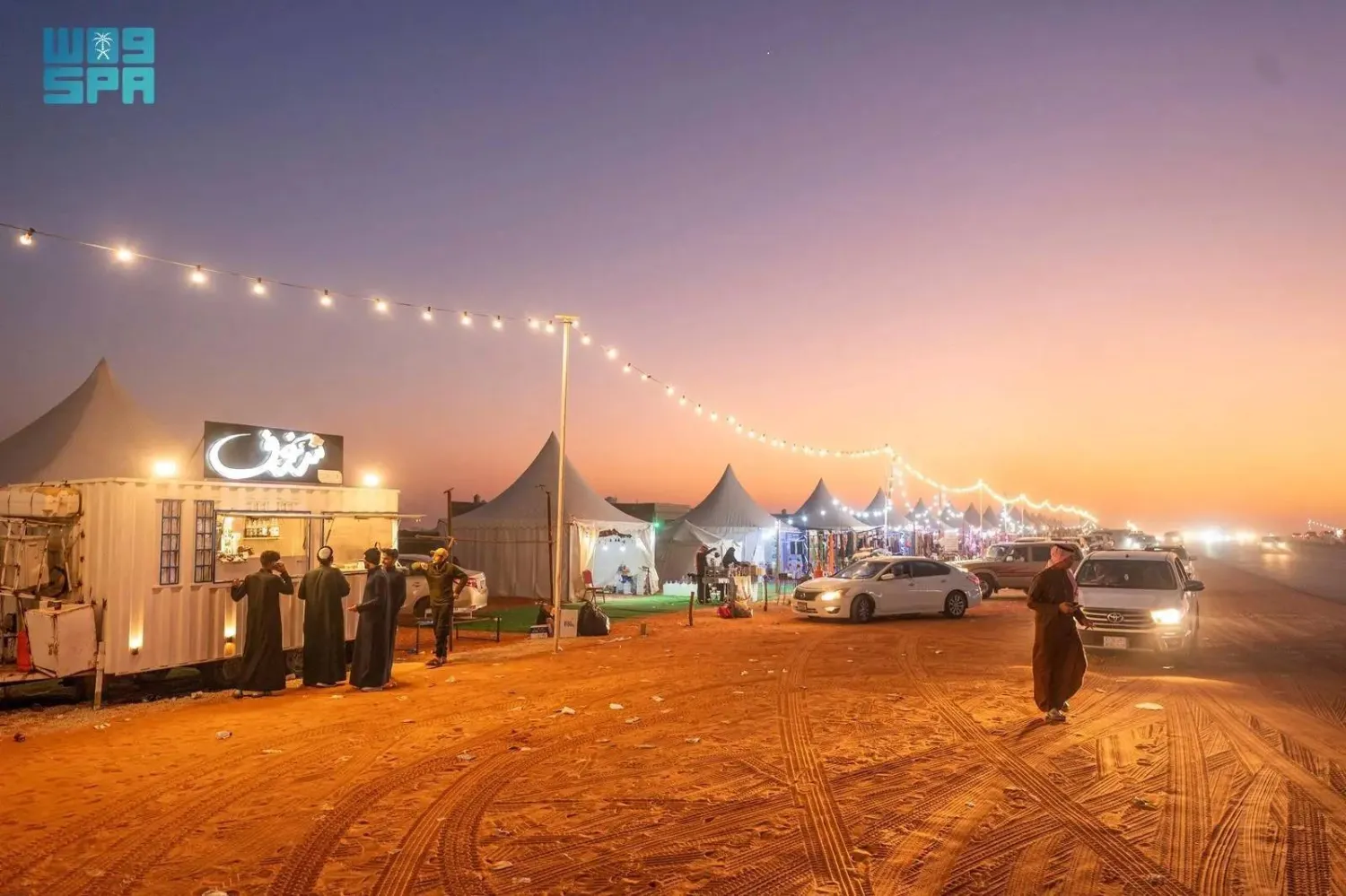Tents and hotel rooms in Saudi Arabia’s Al-Sayahid area, currently hosting the King Abdulaziz Camel Festival, have reached full occupancy in the past few days due to increased demand driven by the pleasant weather and enhanced charm brought by rainfall, the Saudi Press Agency said on Sunday.
The festival's diverse events and associated activities have spurred a surge in the rental of tents and mobile rooms, which are now offering services akin to those of desert resort hotels.
Habish al-Habish, a camp renter interviewed by an SPA reporter, said there has been a significant increase in tent occupancy over the weekend, exceeding 100%. He highlighted the range of accommodation options available in the festival area, from standard rooms to desert resorts offering extensive services and organizing family events tailored to the region's ambiance.
The King Abdulaziz Camel Festival is a major global event that brings together camel enthusiasts and owners, showcases the heritage of the Arabian Peninsula, and emphasizes the cultural importance of camels in the Kingdom, reflecting Saudi pride in heritage, and the special significance of camels to the Saudi culture.
Saudi’s Al-Sayahid Desert Retreats in High Demand during King Abdulaziz Camel Festival

Al-Sayahid Desert retreats in Saudi Arabia are experiencing a significant increase in demand during the ongoing King Abdulaziz Camel Festival. (SPA)

Saudi’s Al-Sayahid Desert Retreats in High Demand during King Abdulaziz Camel Festival

Al-Sayahid Desert retreats in Saudi Arabia are experiencing a significant increase in demand during the ongoing King Abdulaziz Camel Festival. (SPA)
لم تشترك بعد
انشئ حساباً خاصاً بك لتحصل على أخبار مخصصة لك ولتتمتع بخاصية حفظ المقالات وتتلقى نشراتنا البريدية المتنوعة





